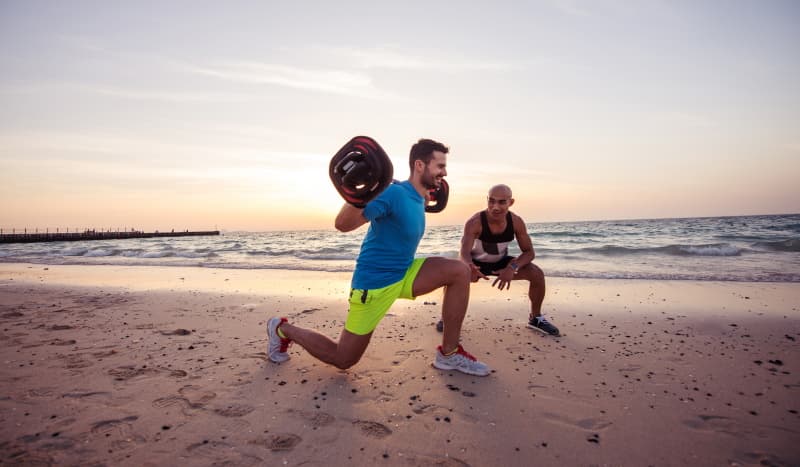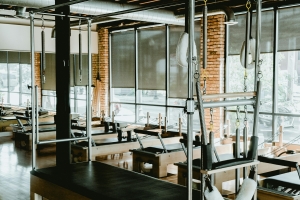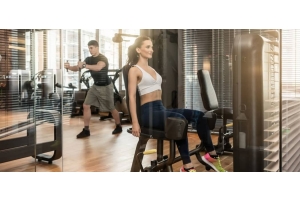Glute Training That Improves Your Performance

The largest single muscle group in the body, glute training is often overlooked and just fitted in as part of your overall training. So why do you need to specifically target your gluteus maximus, gluteus medius and gluteus minimus in the pursuit of performance?
Did you know that men usually target arms, shoulders and chest for workouts and women focus on their bum. This may sound stereotypical, but in anecdotal evidence it really does stack up. Targetting of your glutes when training should be a core component of every athletes training (except perhaps darts players as a strong bum really won't help that 9 dart finish). As Loughborough University researched showed, larger and stronger glutes can help your performance.
Your Gluteal Muscles
With all male and female bodies the glutes consist of three key muscles. The largest of these is the gluteus maximus, then gluteus medius and finally the gluteus minimus. Nine times out of ten, gym users focus on the gluteus maximus only, which means the other two muscles do tend to be a bit of an after thought. The gluteus medius is about half the size and the minimus smaller again. The gluteus minimus is located up near the hip joint.
The gluteal muscles are 'responsible' for hip extension, hip external rotation, hip abduction and posterior pelvic tilt.
This means therefore, there is not one perfect glute exercise that will cover all three muscles - hence most people never really work out the bum properly. For complete development, you need to use a number of exercises to create a "glute training program".
Training Your Glutes
Ok, so not one size fits all where muscles fibres are concerned. If you're wanting to target more powerful glutes to help with sprinting power and speed, then fast twitch muscle fibres will be what you want to be training. They provide power, but less endurance. So, use less repititions during your training. Likewise if you want to develop your endurance, you need to work your slow twitch muscle fibres and they respond better to higher reps.
Did you know that your gluteus maximus has a fairly even split of fast and slow twitch muscle fibres, but your gluteus medius has more slow twitch fibres. This shows that when glute training properly you have to perform both high and low reps for different exewrcises to target thye whole of your bum.
You can plan exercises quite easily by categorising. So which part of the strength curve of the muscles they focus on - low, mid or upper range :
- Low range is the start of the movement when muscles are fully stretched
- Mid range is the middle of the movement
- Upper range being the end of the movement when the muscle is fully contracted
Work Your Glutes
Following on from above, you can look to bring in exercises for each part of the strength curve thereby activating your glutes properly :
Low range : Lunges or Front Squats
Mid range : Dead lifts - either with straight bar, kettlebell or Romanian style
Upper range : Back extensions and Pelvic bridge (Machine or free bar)
Glutes & Your Body
How to show off your new and improved glutes? First things first, your body fat levels. Your glutes sit beneath natural layers of body fat. This will, in some cases, prevent you seeing any change in appearance of your glutes even after weeks and months of training. With high levels of body fat, it's the same principle as your abs - your body fat covers the muscle definition. Reduce your body fat and suddenly you can see dramatic changes in shape and definition.
Targetting your glutes should be easy as part of an overall workout. You can also introduce targeted exercises like abductors - tweaking them to really target the individual muscles for example turning feet outwards slightly whilst performing squats will help to activate the gluteus maximus, or you can also choose a slight wider stance whilst performing the exercise too.
Working your glutes will also help you with your posture. This is of course vital for everyday activities such as walking or standing and then with exercising things like running and performing seated strength work. Lower back problems can come from performing exercises like the pelvic bridges - especially if you are not a regular gym user. Glute exercises can also put some stress on your abdominals but also on your lower back if you suffer from a large anterior pelvic tilt. If this is the case, then back extensions could be the right way to exercise whilst allowing your lower back time to rest and reover.
In Summary
The increased popularity of glute exercises is ultimately a good thing. With the additional research that backs up the importance and benefits of targetting these three butt muscles properly. Training the gluteal muscles can help you with your posture, improve other areas of your training performance and even help you run faster! With increased professional research, we now know the most efficient way to train your glutes properly.
References





